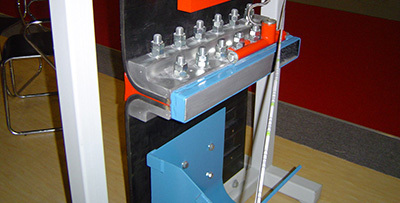News Center
Hezi technology focuses on the research and development of "rapid seamless conveyor belt joint sleeve" innovative technology project

NEWS CENTER

News Details
Elevate Your Operations: Discover the Best Elevator Belt for Industrial Use
Release time:
2025-05-20
Elevate Your Operations: Discover the Best Elevator Belt for Industrial Use Table of Contents 1. Introduction to Elevator Belts in Industrial Settings 2. The Importance of Choosing the Right Elevator Belt 3. Types of Elevator Belts for Industrial Applications 3.1 Bucket Elevator Belts 3.2 Modular Belts 3.3 Conveyor Belts as Elevator Options 4. Key Features t
Elevate Your Operations: Discover the Best Elevator Belt for Industrial Use
Table of Contents
- 1. Introduction to Elevator Belts in Industrial Settings
- 2. The Importance of Choosing the Right Elevator Belt
- 3. Types of Elevator Belts for Industrial Applications
- 4. Key Features to Look for in an Elevator Belt
- 4.1 Material Quality and Durability
- 4.2 Width and Length Specifications
- 4.3 Fasteners and Accessories
- 5. Factors Influencing the Selection of Elevator Belts
- 6. Best Practices for Installing Elevator Belts
- 7. Maintenance Tips for Prolonging Elevator Belt Lifespan
- 8. Conclusion
- 9. Frequently Asked Questions
1. Introduction to Elevator Belts in Industrial Settings
In today's fast-paced industrial environment, operational efficiency is paramount. One of the key components that contribute significantly to this efficiency is the **elevator belt**. Used primarily for transporting bulk materials vertically, these belts are integral to various sectors, including manufacturing, agriculture, and mining. Understanding the nuances of elevator belts can help you optimize operations and increase productivity.
2. The Importance of Choosing the Right Elevator Belt
Selecting the correct elevator belt is not merely a matter of preference; it has far-reaching implications for your operational efficiency and safety. The right belt can enhance material handling, reduce downtime, and lower maintenance costs. Consequently, understanding how to choose the best elevator belt tailored to your specific industrial requirements is essential.
3. Types of Elevator Belts for Industrial Applications
Elevator belts come in various types, each designed for specific uses. Knowing the differences can help you make an informed decision.
3.1 Bucket Elevator Belts
Bucket elevator belts are designed for lifting bulk materials. They are typically wide and equipped with buckets that scoop materials and elevate them vertically. Ideal for agricultural products like grains, they can also be used in mining and recycling operations.
3.2 Modular Belts
Modular belts consist of interlocking plastic segments, making them highly customizable. Their flexibility allows for smooth operation across different angles, and they are perfect for applications requiring frequent cleaning and maintenance.
3.3 Conveyor Belts as Elevator Options
Conveyor belts can also serve as an elevator option when designed with an incline. They provide a practical solution for transporting materials over short vertical distances and are often used in warehouses and distribution centers.
4. Key Features to Look for in an Elevator Belt
When selecting an elevator belt, several critical features should be considered to ensure optimal performance.
4.1 Material Quality and Durability
The material used in the construction of the elevator belt significantly influences its lifespan and performance. Common materials include rubber, PVC, and polyurethane. Choose a material that aligns with the type of materials being transported to ensure durability.
4.2 Width and Length Specifications
Proper sizing is crucial for ensuring that the elevator belt can handle the intended load efficiently. Measure the vertical height and horizontal width of your system to determine the correct width and length specifications.
4.3 Fasteners and Accessories
Fasteners are vital for securing the belt and ensuring a reliable operation. Look for options that offer ease of installation and maintenance while providing robust security to withstand the operational demands.
5. Factors Influencing the Selection of Elevator Belts
Several factors come into play when selecting an elevator belt, including:
5.1 Load Capacity Requirements
Understanding the load capacity that your elevator belt must support is essential. Evaluate the weight and volume of materials to determine the most suitable belt type.
5.2 Environmental Considerations
The operating environment can dictate the type of elevator belt you choose. Extreme temperatures, humidity, and exposure to chemicals can affect the belt’s performance and longevity. Ensure you select a belt that can withstand the specific conditions of your facility.
5.3 Maintenance and Repair Needs
Regular maintenance is crucial for extending the life of your elevator belt. Choose a belt that is easy to inspect, repair, and replace to minimize downtime and disruption to your operations.
6. Best Practices for Installing Elevator Belts
Proper installation is key to ensuring the elevator belt functions as intended. Follow these best practices:
- **Ensure accurate measurements** before ordering the belt.
- **Follow manufacturer guidelines** for installation.
- **Check alignment** to prevent premature wear.
- **Conduct a trial run** to identify any operational issues.
7. Maintenance Tips for Prolonging Elevator Belt Lifespan
To ensure your elevator belt remains in optimal condition, follow these maintenance tips:
1. **Regular inspections**: Frequently check for signs of wear, misalignment, and damage.
2. **Clean the belt**: Remove debris and material build-up to prevent slippage.
3. **Lubricate components**: Keep fasteners and pulleys lubricated to reduce friction.
4. **Monitor operational conditions**: Regularly assess load capacity and environmental factors.
8. Conclusion
In conclusion, selecting the best elevator belt for your industrial needs involves careful consideration of various factors. From understanding the different types of belts to evaluating material quality and installation practices, each aspect plays a crucial role in optimizing your operations. By following the guidelines in this article, you can enhance efficiency, reduce downtime, and extend the lifespan of your elevator belts.
9. Frequently Asked Questions
1. What is the primary function of an elevator belt?
Elevator belts are designed to transport bulk materials vertically in industrial settings, enhancing material handling efficiency.
2. How do I determine the correct size for my elevator belt?
Measure the vertical height and horizontal width of your system, and consider the load capacity needed to select the appropriate belt size.
3. What materials are commonly used for elevator belts?
Elevator belts are typically made from rubber, PVC, and polyurethane, each selected based on the specific application requirements.
4. How often should I perform maintenance on my elevator belt?
Regular inspections should be conducted at least monthly, with proactive maintenance performed as needed based on usage and environmental conditions.
5. Can I install an elevator belt myself?
Yes, but it is crucial to follow manufacturer guidelines and ensure proper measurements and alignment to avoid operational issues.

Recommend News





























